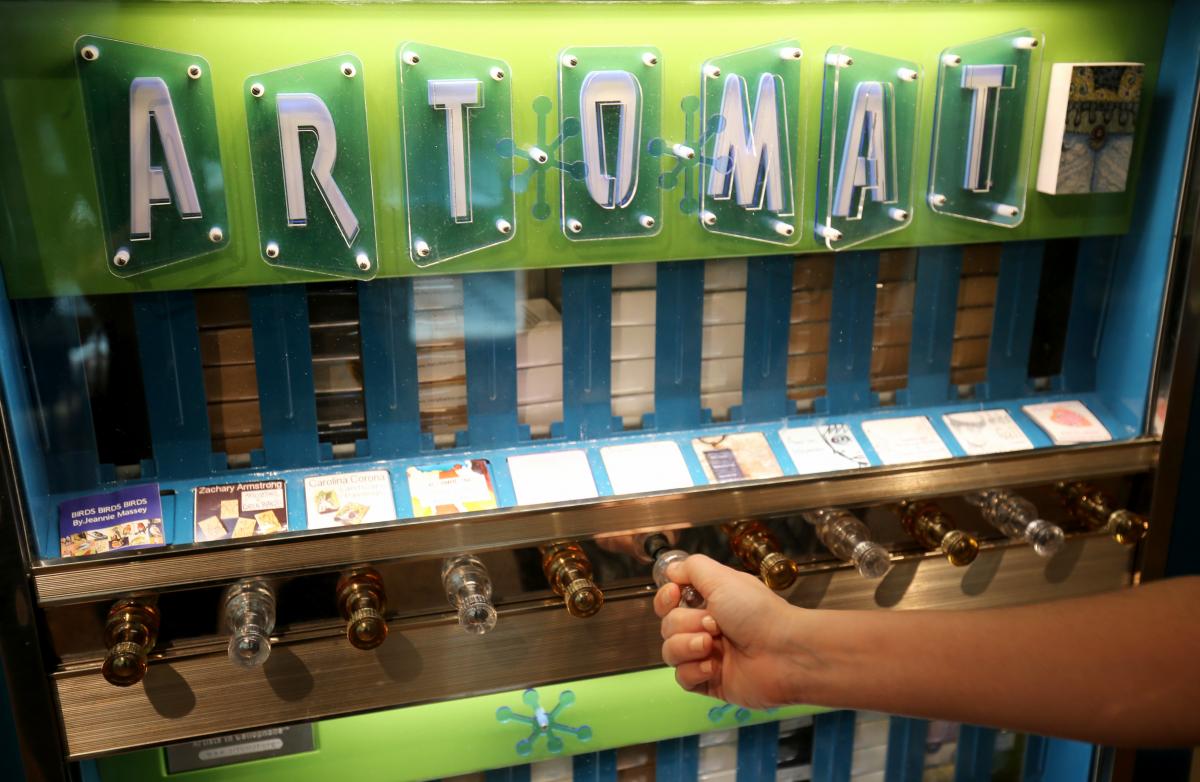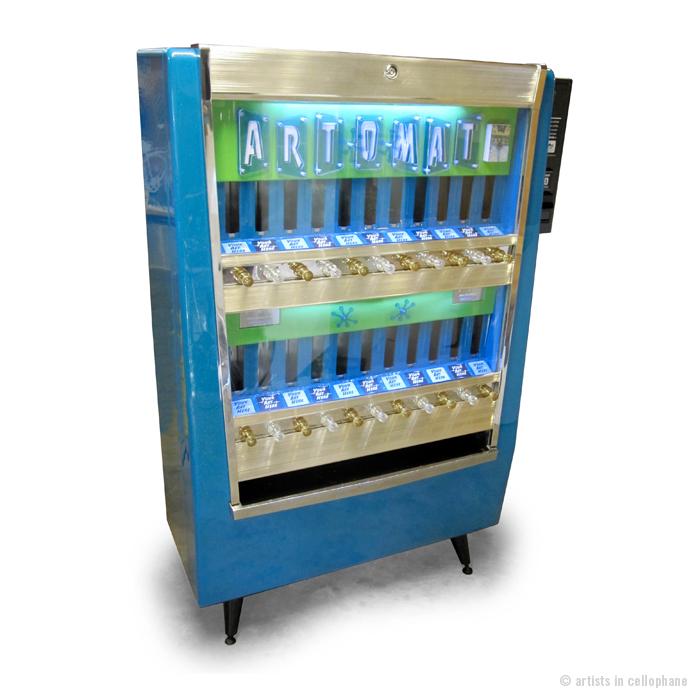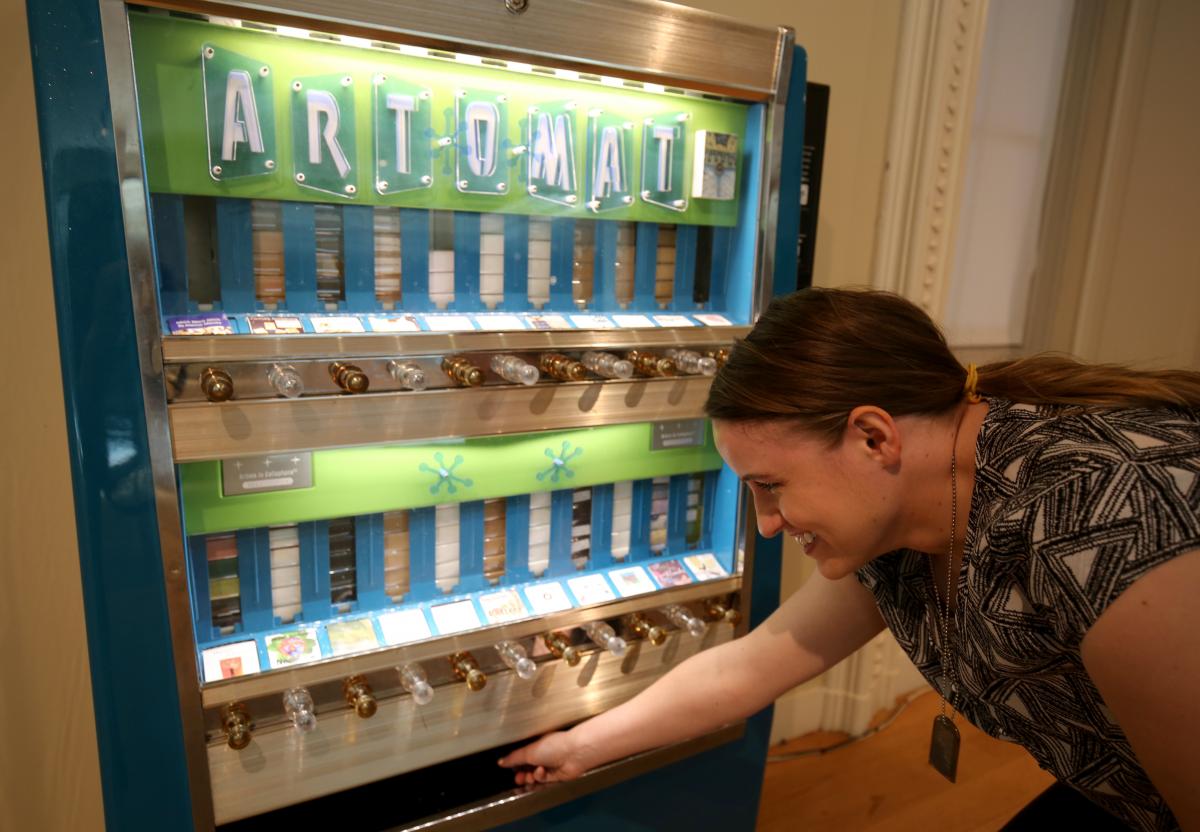Lila Ferber recently interned in SAAM's Luce Foundation Center.
Do you remember the thrill of putting a quarter in a slot and getting a gumball? Now imagine pulling a lever and getting a piece of art! That’s what you can do in the Luce Foundation Center, at a vending machine called the Art-O-Mat. Here at my internship in the Luce Center, I was so surprised to find one of these machines. They are a unique idea because artists from around the country contribute their artwork, including Scott Blake in my hometown of Omaha, NE. I was fortunate to take a flipbook workshop with Blake, and now when I pull the lever, I can get a piece of art with my picture inside.
Art-O-Mat machines are a series of over 100 cigarette vending machines that have been modified to dispense art, located around the world. The organization that supplies the Art-O-Mats was created by Clark Whittington in 1997. Artists are invited to submit an idea in any medium, as long as it fits inside a 2" x 3” box. The bright machines are spread all over the country. The original artworks inside are only $5, and the collector gets the satisfaction of pulling a lever to pick the artist of their choice. This system makes art more approachable and accessible for people to collect.
Artist Scott Blake is a frequent contributor to the Art-O-Mat and is known for his interactive barcode art and flipbooks. The artwork explores “links between identity and consumption in a world increasingly dominated by digital date.”* In one series, Blake creates large portraits of recognizable celebrities such as Elvis and Marilyn Monroe by arranging hundreds of barcodes in rows that were taken from the backs of their CDs and films. In his interactive works, Blake allows the viewer to read the barcodes with their smartphones or with scanning devices in the installation. For the Art-O-Mat, he shrinks these portraits and turns them into flipbooks, starting with the full portrait and zooming into one barcode on the last page.
A few years ago, Blake led a workshop at Joslyn’s Kent Bellows Mentoring Program in Omaha. My fellow students and I helped him produce a flipbook and posed as the subjects. The idea was to make it look like we were floating in mid-air as the viewer flipped through the pages, through the process of stop-motion animation. Blake set up a video camera and would count, “1, 2, 3, jump!” We jumped in a circle, did handshakes, and bowed in the air.
After jumping came the editing process. Blake took screenshots of when we had both feet off the ground and printed the images out in rows. We helped him cut and staple 46 images per book, making copies to ship around the world, including D.C.
Now, when I’m working at the Luce Center desk, I listen for the echo of the Art-O-Mat’s lever and the kerplunk of a box landing at the bottom, ready to be unwrapped. With every sound I wonder which artist the viewer chose, excited that a mini work-of-art, maybe all the way from Omaha, is going into the collection of a new home.



















